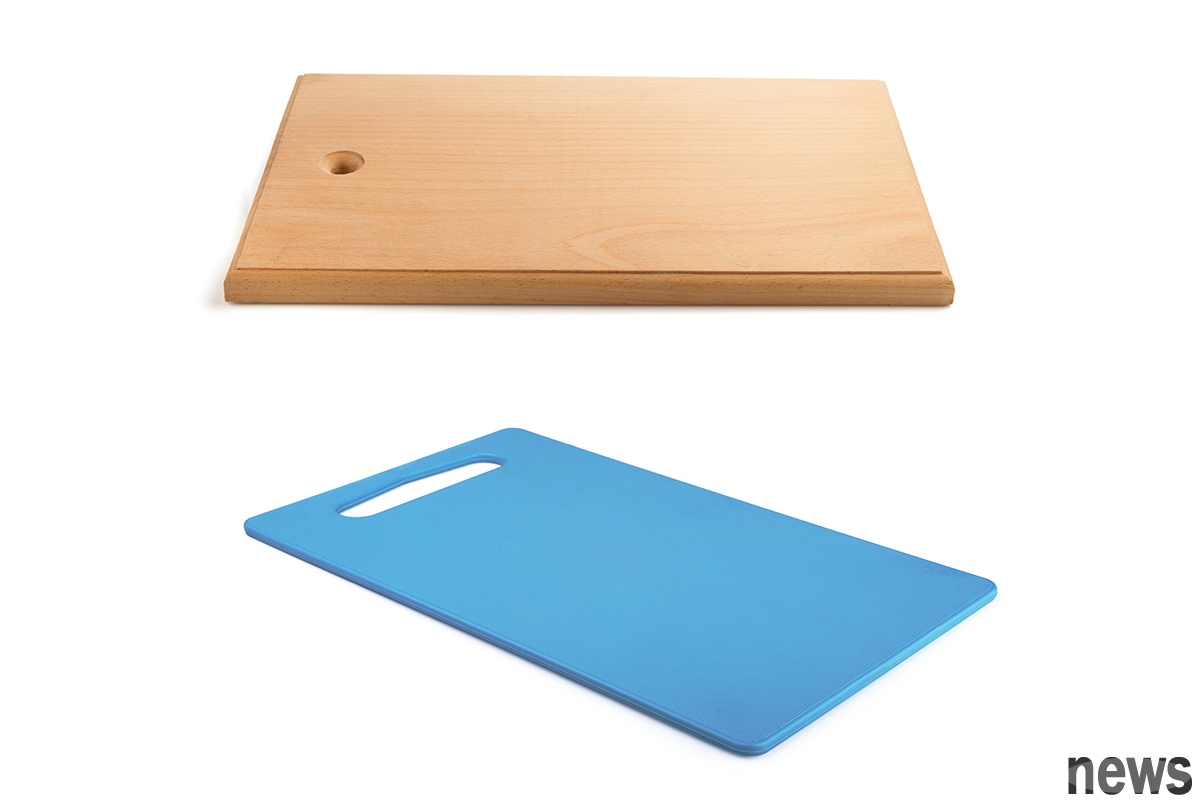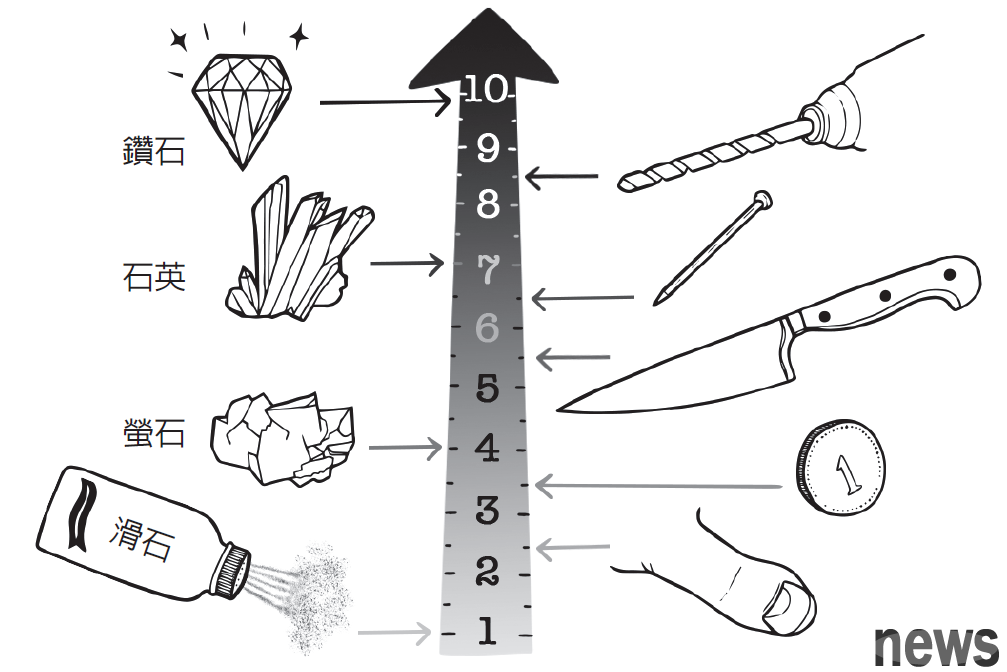▏Cut, cut and cut on the cutting board If there is no cutting board, what is the use of a kitchen kitchen knife with a sharp and smooth surface? In this visible patch, the cutting board is an equally important side that is less eye-catching, but eve...
 ▏Cut, cut and cut on the cutting board
▏Cut, cut and cut on the cutting board If there is no cutting board, what is the use of a kitchen kitchen knife with a sharp and smooth surface? In this visible patch, the cutting board is an equally important side that is less eye-catching, but even this item has scientific principles hidden.
When discussing the design of a cutting board, the key is the hardness of the cutting board material: the ability to resist deformation when the cutting board is subject to pressure, or, in particular, the ability to resist cutting. If the cutting board is too hard, the blade will become corrosive; on the contrary, if the cutting board is too soft, it will disintegrate itself.
To know that the cutting board is too hard or too soft, you must quantify the hardness.
There are many ways to quantify, the simplest one is to use the Mohs scale of hardness, which was made by German Friedrich. Friedrich Mohs formulated in 1812. The Mohs hardness meter is divided into ten levels from 1 to 10, and was originally used to quantify the hardness of minerals. It is worth noting that any mineral with a higher degree of hardness can scratch the surface of the mineral with a lower degree of hardness. Diamonds are at the highest 10 of the hardness meter and can scratch any material with a hardness lower than their own, such as quartz with a hardness of 7. Similarly, quartz will scratch the gypsum because the Mohs hardness of the gypsum is only 2.The steel material used to make the blade is located at 5 or 6 of the Mohs hardness meter, so you should never use a cutting board with a hardness higher than this. Please note that whether it is glass or garland kitchen flow table, they are mainly composed of quartz, and the two are 6 and 7 on the Mohs hardness table. Don't use your favorite knife to cut things on the surface of glass or sauna, unless you prefer to sharpen the knife regularly.

A wise manager will use a wooden cutting board or plastic cutting board. But which one is the best choice?
Professional chefs, food technicians, and microbiologists have been discussing which cutting board is the most practical, durable or hygienic.
This problem is complicated by a large number of confusing factors.For example, a professional chef told me that cutting things outside any wooden cutting board can cause arm pain. On the contrary, many homeowners or husbands prefer to use plastic cutting boards because these people do not have a dedicated cleaning staff, and plastic cutting boards can be thrown into the dishwasher to clean. However, some people also say that natural phenol compounds in wooden cutting boards can kill bacteria that remain on the surface. This just happened to allow me to introduce the most important aspect of cutting board science: health.
Since there will be a release of raw food on the cutting board, it is possible that bacteria will remain and contaminate the next food placed on the cutting board. No doubt, the most obvious way to do this is to follow all commercial dining kitchens and use another different cutting board to cut raw meat, the most likely hiding ingredient that is difficult to cause bacteria, including salmonella.
In order to controversy over the discussion of the types of listening, researchers have conducted a number of scientific research, including TV programs I have participated in and hosted. In this example of poorly-controlled television science experiments, the tests were performed by a laboratory recognized by British government scientists in Glasgow.
We started our research with a batch of brand new and used cutting boards, some made of wood and some made of plastic. First, in order to have a unified health base, all of these cutting boards are disinfected in the same way. Next, we contaminated a portion of each cutting board using a solution containing known bacteria. After the cutting board is dried, the following twenty-four hours are taken. The way to calculate the number of bacteria in each sample is to vigorously apply a little bit of bacteria from each sample to the culture dish one by one, let it grow, and then manually calculate the number of colonies cultivated. Part of the purpose of this detection is to simulate putting raw chicken and other foods on the cutting board without cleaning them thoroughly; maybe just rubbing them at will; then use the same cutting board again, what will happen? We want to know if we can detect that wooden cutting boards are antibacterial to a certain extent. Will wooden heads kill more bacteria than plastic? What disappointed the director who filmed that day was that the answer was "no".
In fact, it is completely unrelated to what material the cutting board is or how long ago it was made. The amount of bacteria left on the uncleaned and clean cutting board is disturbingly large.
So, what if you really do what you should do after using up the cutting board and clean the cutting board? We tested the same batch of cutting boards again, but this time after the cutting board was exposed to the bacteria, we first scrub it thoroughly with hot soapy water. When we last checked that there was no bacteria on the cutting board, there was another result of no significant difference between these two cutting boards.
From the perspective of TV program, this can be considered a disaster. We have set up such a large-scale scientific test, which solves all the complex procedures and has achieved disappointing results. However, this result is not surprising and is consistent with several previous research conducted on cutting boards.
From the perspective of scientific views, the above results indicate that if there is a difference between a wooden cutting board and a plastic cutting board, the difference is also trivial, and the correct cleaning method may have a greater impact than the cutting board itself.
If this is true, for a survivor or even a professional chef, this means using any chopping board you like. If you want to use a cutting board that can be put into a dishwasher, choose plastic, but if you prefer the touch or beauty of the wood, choose wood.However, all studies agree that if the surface of the cutting board is cut into a pile of deep grooves, no matter how hard you try, the cutting board will become a dangerous tool that seriously affects health, and will never be cleaned and bacteria will grow in the grooves. There is also a little bit that if the wooden cutting board cracks, it will not only hide bacteria, but also fill a piece of food. I also don't recommend using bamboo cutting boards. Although this cutting board looks and feels like a wooden head, bamboo is actually a grass, and the grass's pendants are particularly prone to produce small pieces of silica called phytolith. Silicone is harder than steel, so bamboo cutting boards will change the blade like glass. As you can see, picking a cutting board is a complicated errand.
※ This article is excerpted from "The Principle of Deliciousness: The Secret Relationship between Food and Science"."The Principle of Deliciousness: The Secret Relationship between Food and Science"
Author: Marty Jafferson
Translator: Wang Wanhui
Publisher: Benshi Publisher
Publication Date: 2020/08/26